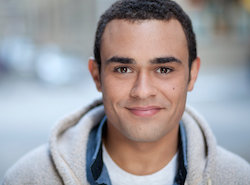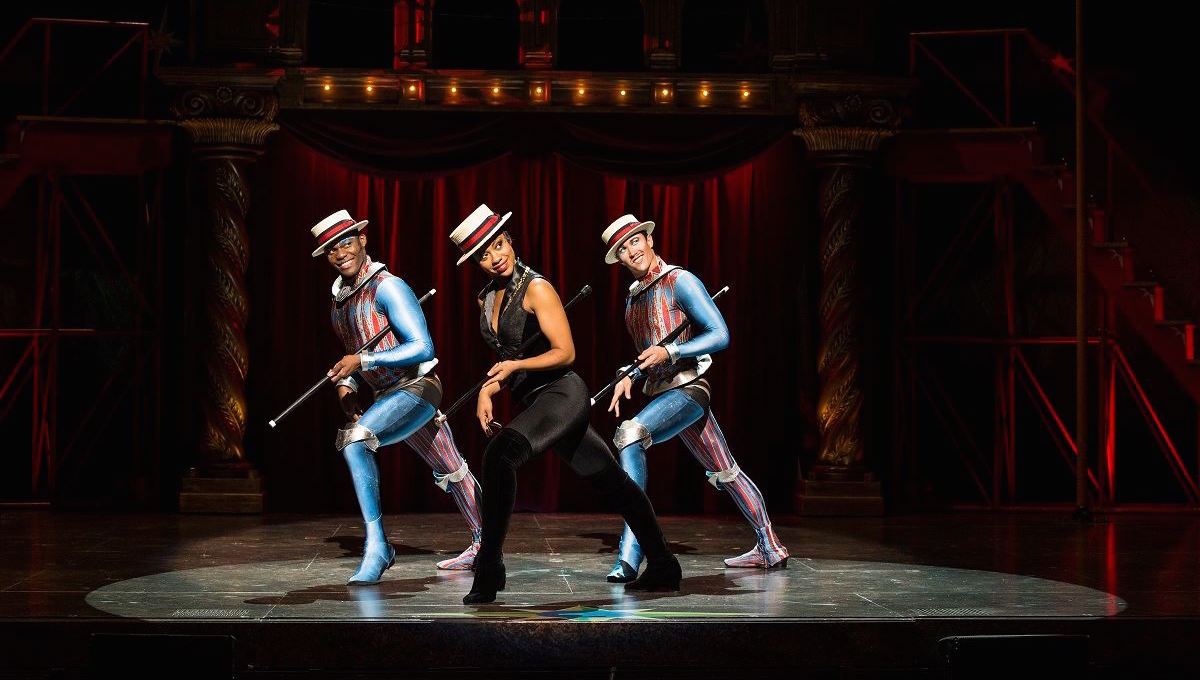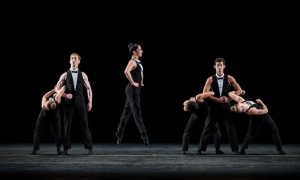Have you ever heard the term “swing” in reference to a Broadway production and wondered what it was? A swing is a performer who covers multiple roles in the chorus of a particular production. For many Broadway stars, this is where their journey began – in the chorus where they juggled numerous positions.
Dance Informa recently caught up with three Broadway Connection teachers who have experience being swings on Broadway. Broadway Connection, a performing arts education company that seeks to inspire the next generation’s love of musical theatre, allows performers like Andrew Chappelle, Mathew deGuzman and Fredric Odgaard to pass along their knowledge and expertise to aspiring student dancers. Here, these teachers now share their personal insights with us. When asked what it takes to be a swing, they listed the following traits.

Mathew deGuzman.
#1. You must be detail-oriented.
PIPPIN cast member Mathew deGuzman is very familiar with being a swing. Before his current gig as an onstage track and an understudy, he was a swing for Follies and A Christmas Story.
He says, “As a swing on Broadway, you not only need to have the skill set to perform every track that you cover, you also need to have every small detail in your mind, ready to use at a moment’s notice. You need to know all of the important onstage business like traffic patterns, prop handoffs, what wing you enter and exit in. You also need to know the backstage traffic as well — where do you get a prop from, where do you drop it off, where do the costume changes happen? Swinging uses a completely different part of the brain than you would normally performing your own track.”
#2. You must be able to pick up cues fast.
Andrew Chappelle, currently a swing in Hamilton who covers numerous male principals and an ensemble track, explains, “The ability to learn choreography and music quickly is a necessary skill in general.
“When you are in previews, the show is changing every day, and you need to be able to adapt and implement those changes in the show at night,” he advises. “As a swing, you have to be able to do that for all the tracks you cover. The way to train yourself to do that is by taking several dance classes. This works that muscle in your brain to pick up choreography and all the details that accompany it.”

Fredric Odgaard.
#3. You must be observant.
Current Kinky Boots performer and former Finding Neverland swing Fredric Odgaard notes that you must be highly attentive. Noticing and remembering specifics like “how someone likes to be partnered” or “what prop goes to which person” is crucial, he explains. These little nuances add up to big production moments.
#4. You must be a pro at juggling tasks.
When you’re a swing, you will juggle various roles, requiring lots and lots of memorization and then organization. At any one moment, you could be called into a new or different role, each involving its own script lines, choreography, lighting cues, costume changes, props and last-minute adjustments.
One trick that Chappelle, deGuzman and many other swings and performers use to help out is having notecards they can check. “I like to make tracking sheets that has every single detail down on the paper,” deGuzman comments. “I am constantly updating these, adding notes and additional helpful ideas. I don’t have a particular strategy except I never stop studying. You can never be too good in a track.”
#5. You must be in top physical condition.
“It’s important to keep yourself healthy and strong so that when your name is called, you can perform to the best of your ability,” Chappelle says. “That means getting sleep and resting when you aren’t at the show.”
#6. You must be calm under pressure.
“The ability to keep calm in highly stressful situations, that’s the key,” Chappelle adds. “It’s assumed you know the steps and the words, but to make your fellow cast members feel at ease when you are on is most important.”

Andrew Chappelle. Photo by Kate Lumpkin.
#7. You must be able to see the bigger picture.
Odgaard says, “If you can always keep the big picture in your head, you will always know where you fit. It’s like having a puzzle sitting in front of you with only one piece missing. That one piece only has one place it can go. At least that’s how I look at a show. I go number by number because it’s less overwhelming for me.”
Chappelle reemphasizes this point. “The best swings I’ve worked with know their tracks and know the entire stage picture,” he adds. “When I was doing Mamma Mia, for example, I only knew what my character did. I was oblivious to everything else on the stage. Being a swing has widened my awareness.”
#8. You must be able to put your emotions and your ego aside.
Odgaard remarks, “I think one of the greatest challenges of being a swing is setting your emotions aside. Being a swing is hard on so many levels, but what I struggle with is the feeling of being left out or not feeling like you’re part of the team. You are such a big part of the show in the grand scheme of things, but it is still an ego-crusher if you ultimately want to be on stage. I know so many people who are good at swinging but prefer to be on stage because they like to perform and to be on stage every night.”
Agreeing, deGuzman notes that one of the greatest challenges is “leaving your ego at the door”. He adds, “Swings don’t necessarily get to perform every day, which is really difficult for most performers.”
Overall, though, deGuzman and the other swings agree that while the job is stressful and highly demanding, it’s also a bunch of fun. “It is without a doubt one of the most stressful jobs I have ever done,” deGuzman says, “but understanding what it is to be a swing and seeing the way a show grows and how each person has a purpose in this huge machine is a great asset.”
For studio owners or dance teachers interested in having a Broadway Connection teacher out to their facility to teach a master class or workshop, visit www.broadwayconnection.net.
By Chelsea Thomas of Dance Informa.
Photo (top): Mathew deGuzman, right, in Pippin. Photo by Joan Marcus.















